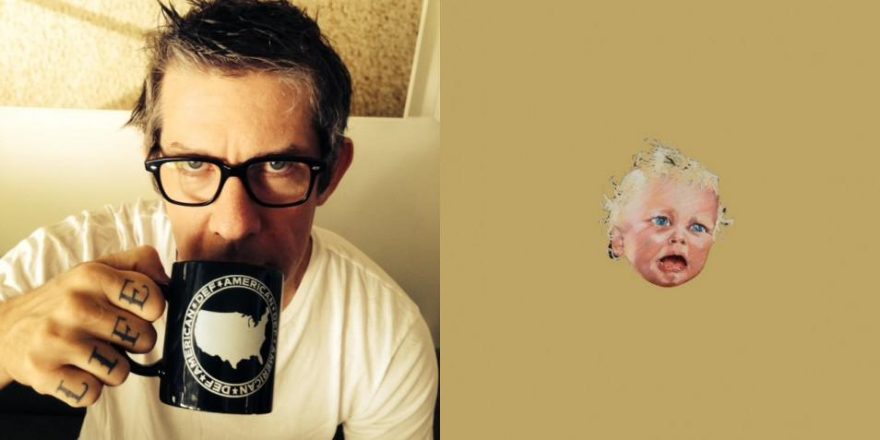On their new record, To Be Kind, Swans want to tell you something. Swans want to speak directly to you. They call out from the pulpit. They baptize in the river. Offer sacrifice. They handle snakes. They mean it. The power of certainty. The power of purpose. The power of certainty of purpose. Not for one moment on Michael Gira’s long-running experimental group’s new record, its 13th, does Swans stop meaning it.
My friend’s twentysomething son claims his generation has been infected and sickened by sarcasm, which is for him a product of internet culture. Maybe so, but in my early 20s, before net culture got its hold on the mainstream, I, too, became disillusioned with irony and sarcasm. I grew tired of it in my peers. I grew tired of it in myself. I consciously began to try to say something, instead of sounding as if I were saying something. I began to appreciate commitment and the courage of conviction. Sarcasm is a function of fear. It lacks boldness. It couches the fear of taking an earnest chance beneath an illusion of aloof sophistication. It is life without risk, and what is life without risk?
After the initial, unrelenting dark ritual of the first 20 minutes of To Be Kind, a two-album set, the songs “Screen Shot” and “Just a Little Boy (for Chester Burnett),” there is a break in the clouds. With the beginning of “A Little God in My Hands,” it feels like an entirely different experience has begun. However, as the song progresses, without you necessarily noticing, you are once more enveloped in the dark pulse that characterized those first 20 minutes — the insistent throb of intent.
Announcing its entrance with a series of 152 big, distorted unchanging chords (yes, I counted), “Bring the Sun/Toussaint L’Ouverture” clears space to begin the next 34 minutes of To Be Kind. (Yes, the song is a little more than 34 minutes long.) These chords could be the columns you see as you approach a great temple. I was reminded of an afternoon I spent dwarfed by colossal sandstone columns as I wandered the Great Hypostyle Hall of Karnak in Egypt. This is the spirit of the whole record expressed in one song. It is pounding. It feels like a primitive ritual. It is tuneless. There is no melody. As the first half, the “Bring the Sun” section, breaks down into the second half we hear recordings of wood being sawed, horses’ hooves, children’s voices; it could be the sound of a gallows being erected in the center of town. It could be the erection of a temporary stage from which Gira can evangelize, barking out, “Sangre de Dios!” and “Hijo de Dios!” (which roughly translates to “Blood of God!” and “Son of God!”), as he does throughout the second half, the “Toussaint L’Ouverture” section.
It is worth mentioning here that you can’t have a long album of droning jam music (almost two hours here) without an occasional thought that, say, this 10 minutes of jam is excessive and could be cut and it would all be tightened up. But to indulge that approach is to miss the jungle for the trees. It is ecstatic, all the time, and that is the point. It’s not possible to come down from your hallucinogen, put your clothes back on, take 10 minutes to chat with your thesis advisor, and then strip and begin again your ecstatic hallucinogenic dance. If you are in, then you are all in. Like fucking, there is no room here for your sophisticated self. At the end of “Bring the Sun/Toussaint L’Ouverture,” a long, lingering reverb is allowed to die away slowly. It is the sound our collective exhaustion. We are spent.
Gira’s voice is not often alone on To Be King. The main vocal, its companion vocal and the background gang vocals (supplied at various times by drummers Thor Harris and Phil Puleo, guitarist Christoph Hahn, bassist Christopher Pravdica and guests such as Annie Clark of St. Vincent, Jennifer Church, the London band Cold Specks and “Little Annie” Bandez) are hard not to hear as preacher, primary acolyte and attendant choir.
It is the preacher, plus an acolyte, that are revealed more prominently here for the first real clearing on “Some Things We Do,” the duet with Bandez. The unrelenting pulse is still there, of course. Or I should say it soon returns. Though this time it’s subdued, and carried solely by the two voices in a chant. It’s actually over five minutes long itself. Still, it feels like a small respite; a moment to recover. This is a little arch between two of the temple’s largest pillars, “Bring the Sun/Toussaint L’Ouverture,” and “She Loves Us,” the 17-minute start of the album’s second half.
Where does one go, on a record like this, in the latter half of the recording, in the “deep cuts” section? The answer here is that you dig in for some more of what came before. Indeed, one could argue that this album has some of its more varied songs on the back end, while its front end is loaded with what on another album might be considered the deep cuts. After the brief tearing sound of what could be the second half of To Be Kind being torn open, “She Loves Us” begins again where we left off – repetition and groove. The entire album is a deep cut, after all.
The chug that eventually develops a few minutes into “She Loves Us,” and its relationship to the tuneless main vocal is reminiscent, to me, of some early punk — complete with the appearance of some Stooges-esque high piano quarter notes. After a brief instrumental breakdown around minute seven that sounds remarkably similar to Tool (something that happens more than once on this record, especially at times when the bass, drums, and guitar are revealed alone), it slowly builds again. We hear a mid-tempo Neu!-style groove with a main vocal that starts as a timeless, expressive growl but develops, by the 14th minute, into what could be a few moments of early-PiL Johnny Lydon. The wheels come off again, only this time it all devolves into a cacophonous heap. Having stumbled to a complete stop, there are now only drunken moaning vocals — a tuneless Ligeti choir — for a few moments. Then it all ends on some big, heavy chord stabs that sound more like the intro to the next song than the outro to the one you just heard. Ultimately, the cut has a different enough overall feel to warrant being on a record with lots of long, repetitive grooves.
“Kirsten Supine” is a slow song. It has a prettiness that reminds me of 1991’s White Light from the Mouth of Infinity, which was a more tuneful side of Swans than what we hear on To Be Kind. Like brooding nursery rhymes, the appearance of some of Gira’s uncomplicated vocal melody reminds us that the simplicity they employ in service of their heavier explorations serves them equally well in their quieter, softer moments. But if it’s possible the first half of “Kirsten Supine” could have been slotted in with older Swans songs such as “Love Will Save You” or “Miracle of Love,” the second half — its timbre, the rich character of the recording — belongs right where it is.
After the languid pace of “Kirsten Supine,” the record ramps back up quickly. After a clever but unpretentious intro, “Oxygen” develops into a jagged, awkward, muscular groove built on some simple dissonant jazz guitar chords. The song becomes even more staggered while simplifying to stabs, it then stops, revisits its jagged beginning groove and eventually ends in multiple jabs of — say it with me — great big, distorted chords.
After a few minutes of a dulcimer and what sounds like an old radio recording, the song “Nathalie Neal” produces a more up-tempo groove, only this time in a shuffling triangular time signature — a waltz.
The last song and title track begins with the feel of a spare gothic southern ballad. It erupts, not surprisingly at this point, midway through, striking out with a number of different big chords until finally deciding on one. It then spends the last couple of minutes of the record on that one chord. For one last time, we end as we begin. Simple. Direct. Powerful.
One of this world’s interesting contradictions is that many of the things I dislike about my favorite artists are invariably connected to what I most appreciate about them. The same applies, in a more general sense, to many of my favorite people. But as a young man, I believed that one could simply carve out what one dislikes from imperfect things in order to create perfect things. But with exceedingly rare exception, I’ve come to believe you cannot have one without the other. What makes some moments of Nick Cave, Lou Reed or PJ Harvey sometimes overwrought is the very mechanism that draws them into the extremities where they find overarching beauty. They aren’t devoid of irony, of course, but they are defined more often by an earnest literary clarity of vision. They say what they mean. You have to stomach a little too much, sometimes, in order to approach more than enough. I’m reminded of the Oscar Wilde quote from The Picture of Dorian Gray, “Moderation is a fatal thing. Enough is as bad as a meal. More than enough is as good as a feast.” This album is a powerful, fecund feast. Is it excessive? Of course it is. Is there too much? There is. That is precisely why you are compelled to indulge. The sacrificial animal has been put to the fire. Pull up a chair at the long table. Eat.









